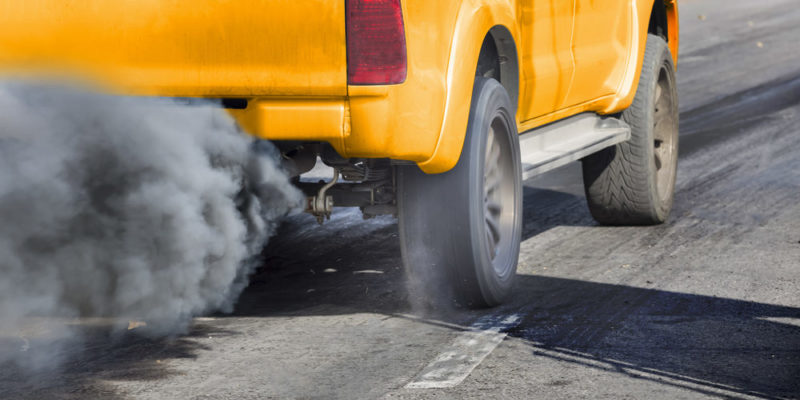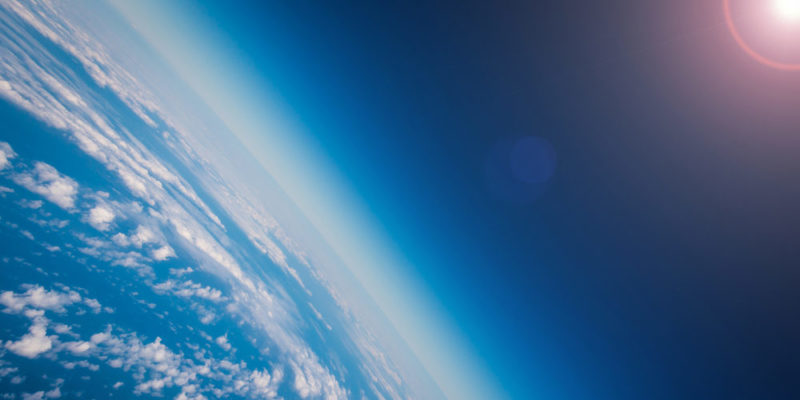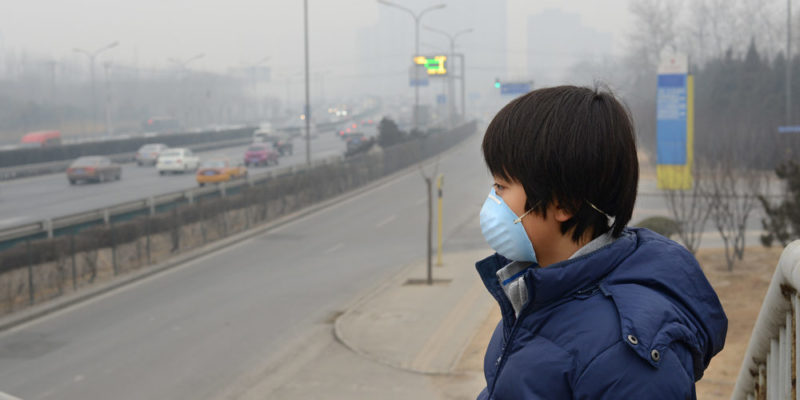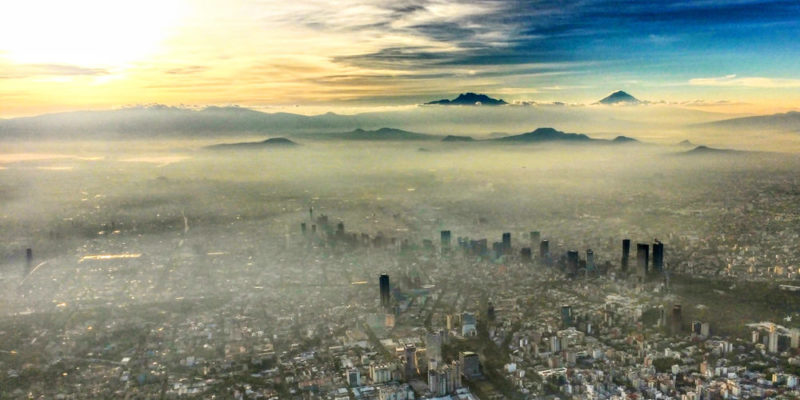We explain what air pollution is and its consequences. In addition, its characteristics and possible solutions.
What is atmospheric pollution?
Atmospheric pollution is the presence in the air of chemical, physical agents or forms of energy that directly or indirectly cause harmful, unpredictable or uncontrollable reactions in the environment , negatively impacting the ecosystems of living beings and the quality of life. as we know it.
Atmospheric pollution is in many cases invisible, but noticeable through unpleasant odours, stinging sensations or irritation to the eyes and mucous membranes or skin , although in some cases it may be visible to the naked eye (fumes, particles suspended in the air , clouds of unusual color, etc.).
This is a booming phenomenon since the industrial explosion that began in the eighteenth century , aggravated over time as man pours more and more harmful chemicals into the air, to the point that in many human cities there are days environmental alert due to contamination and citizens must take measures to protect themselves.
Types of air pollutants
According to its insertion process in the atmosphere , two forms of pollutants can be identified:
- Primaries. Those pollutants that are expelled directly into the atmosphere.
- Secondaries. Those substances that are not pollutants per se, but once in the atmosphere react chemically with others (primary pollutants or natural substances) and form harmful compounds.
Main air pollutants

There are two main forms of pollutants in the atmosphere, namely:
- Gases. The different contaminants in gaseous or vapor form rise to the atmosphere as they are less dense than air and once there they exert a harmful effect. Carbon dioxide, carbon monoxide, nitrogen oxides and gases resulting from the burning of hydrocarbons (fossil fuels such as gasoline, diesel, coal, etc.) are a good example of this.
- Aerosol sprays. Aerosols are called heterogeneous mixtures of solid or liquid particles that remain in suspension in a gas, such as the air in the atmosphere. Many of them can be seen, like a form of smoke, and others are so tiny that they go unnoticed. These forms of powder or liquid can be inhaled and go inside the body, even being able to reach the bloodstream.
Polluting gases

The list of the main known polluting gases is long, but the following stand out:
- Chlorofluorocarbons (CFCs). Gases used in the refrigeration and air conditioning industry, usually released into the atmosphere when old appliances are disposed of or broken, and used to be part of most spray or aerosol systems. They are particularly harmful to the ozone layer.
- Carbon monoxide (CO). Produced during forms of incomplete combustion, such as that carried out in combustion engines for hydrocarbons and fossil fuels (gasoline, diesel, petroleum derivatives ). It is extremely dangerous for animal life, since when it enters the bloodstream it binds to hemoglobin and prevents the transport of oxygen , thus causing death.
- Carbon dioxide (CO 2 ) . A substance of natural presence in the world, necessary for photosynthesis and product of respiration , as well as the decomposition of organic matter. Forest felling and underproduction of this gas in industrial or combustion processes have increased its levels, leading to global warming.
- Nitrogen monoxide (NO). Colorless gas insoluble in water , industrially by-produced and vented into the atmosphere, where it tends to oxidize rapidly and give rise to the formation of nitric acid ( acid rain ) and contributing to the greenhouse effect.
- Sulfur dioxide (SO 2 ) . Similar to the previous case, this gas is produced during the combustion of coal with sulfur content and goes into the atmosphere, where it generates sulfuric acid that is highly harmful to plant and animal life.
- Methane (CH 4 ) . Hydrocarbon gas resulting from the decomposition of organic matter in the absence of oxygen, such as in swamps or in subsoil mineral deposits, is one of the main gases that cause the greenhouse effect and global warming .
"natural" pollutants

Other atmospheric pollutants have their origin in phenomena unrelated to man, such as volcanoes (which throw ash into the atmosphere), forest fires in times of drought (which fill the air with combustion gases of organic matter), methane product of the decomposition of large areas of organic matter (such as swamps, etc.).
Climate effects of air pollution
The main effects of air pollution that we know are:
- Impoverishment of the air. The poor quality of breathable air translates into an increase in respiratory diseases, weakening of the immune system and possible complications derived from the presence of heavy metals or harmful substances in the air of cities.
- Greenhouse effect . Global warming is a debated and worrying phenomenon that causes climatic changes as a consequence of the gradual warming of the Earth . This phenomenon is attributed to the presence of polluting gases in the atmosphere, which retain heat acting as a planetary greenhouse.
- Destruction of the ozone layer . The ozone layer is a natural part of the atmosphere, whose very high presence of this gas (O 3 ) shields the earth from the direct impact of the sun's rays, thus protecting living beings from radiation and keeping the global temperature stable. Many polluting gases react with oxygen and prevent the formation of the unstable ozone molecule , opening a hole in the layer and allowing solar radiation to pass through without a filter.
Smog
It is known as smog, mist, haze or polluting fog to the suspension of polluting substances in the air for long periods and at high pressures, generating a stagnation of the air that is extremely detrimental to respiratory health. It is a registered and combated phenomenon in many cities of the industrialized world.
Health risks

Air pollution involves numerous risks to life, such as:
- Cancer. Many polluting substances, such as heavy metals, are highly toxic and carcinogenic.
- Respiratory problems. Especially in asthmatic people, but it can also lead to deterioration of the lung walls and chronic respiratory failure, similar to that of smokers.
- Mucosal irritation. In the eyes , the nose, the throat.
- Headaches and increased pressure. Headaches are common in people living in highly polluted places, and breathing difficulties can lead to cardiac symptoms such as high blood pressure.
Most polluted places
The cities with the highest atmospheric pollution on the planet are those with the highest automobile circulation, the greatest industrial presence and the least controls on matter , the situation being worsened if there are no strong and continuous winds in the area that help to displace the substances towards other latitudes.
The cities with the worst air in the world are considered: Onitsha, in Nigeria; Peshawar, in Pakistan; Zabol, in Iran; Mexico City, in Mexico ; Santiago, in Chile ; Delhi, in India ; Beijing, Chengdu, and Shanghai, all in China ; Jakarta, in Indonesia and Moscow, in Russia.
Control and prevention methods

There are ways to mitigate the atmospheric impact of industrialized society , such as the use of catalytic converters and other enzymatic additives that reduce the expulsion of harmful gases into the environment, especially for automobile exhaust and for factory hives.
Air filters and air recirculation and gas or coal desulfurization processes are also suitable mechanisms for protecting the planet's air. The same is true for the ban on aerosols or sprays with CFCs, now almost total, using CO 2 instead.
international protocols
The protection of the air is an environmental priority in developed countries , whose welfare state allows to legislate in this regard and be stricter with its “green” regulations . The EU has announced since 2001 its intention to regulate the emission of harmful gases in its member countries, through a series of laws , sanctions and supervision.
In addition, the Kyoto Protocol on climate change, promulgated by the UN , which is signed by almost all the countries of the world except Canada and the US, commits the world leadership to reduce the emission of these atmospheric pollutants in the coming decades.
The above content published at Collaborative Research Group is for informational and educational purposes only and has been developed by referring reliable sources and recommendations from technology experts. We do not have any contact with official entities nor do we intend to replace the information that they emit.
Passionate about understanding and contributing to a world that does not stop changing. New forms of Work, Sustainability and Technology. For many years he has worked as a creative for large international companies. He has a Ph.D. in information technology and he has been doing quantitative research in the interdisciplinary areas of information systems, cyber security, data analytics and artificial intelligence. He continue to look for creative solutions through technology to help companies to be more humane and sustainable..
Leave a reply
Your email address will not be published. Required fields are marked *Recent post

Sport: What Is It, Types, Risks, Features, Characteristics and Examples

Dogs: Emergence, Features, Characteristics, Feeding and Breeds

Story: Definition, Elements, Structure, Features and Characteristics

